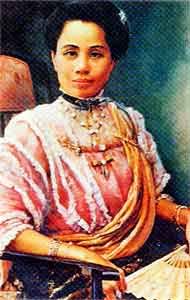In Thai cosmology, a popular expression of these archetypes are expressed in the "Khon" - masked dance of the Ramakien, a version of Ramayana that was adopted into Thai literature with Thai personality and characteristics since the times of Sukhothai and Ayudhya. King Rama I composed a comprehensive literary version that present day Thai dance and theater base their acts on.
There are several links on the internet about Ramakien, some of which I've listed below. However, what delighted me the most was this website of the "Joe Louis Theater".
In 2001, I visited Burma. Apart from the Shwegadon Pagoda, the most memorable impression I had of Burma was its marionette tradition. Even in the form of its touristic presentation, it indicated a highly developed art form that amazing integrated music, song, dance, theater and puppetry. When I got back to Thailand, I tried to find what I could about Thai puppetry. Sadly, all I found were empty dolls sold as tourist souvenir. I visited the National Museum where there was an exhibit of some Thai puppets that were rescued and restored and was told that there had been only two performances long over because there wasn't enough people who knew how to control the puppets. Now, they have this excellent website and a theater that gives daily performances which doubles as a museum where you can see a demonstration of how the puppets are made and manipulated!


Well anyway, this recent discovery of what archetypes actually represent had me thinking about Thai Khon masks. When I was working in Thailand, I heard on several occasions people referring to their work persona as a Khon mask. Khon masks are highly respected in Thailand, you can only wear one if you've done a ceremony in respect of its spirit, or it is said that you will be possessed by bad spirits. And of course, being a mask, it's not the real you. Each job position required a different mask.
From an admiration of our Prime Minister, Thaksin Shinawatra for his perseverance in politics, to many indulgent forgivings for his foul ups, to outright outrage at how he's mishandled the Southern Muslim incidents, to pity for his being put on the tough spot when the Tsunami hit.... well, I realized that we're all participating in some archetypal forces here. PM Thaksin himself, I am sure, doesn't know what has him in its grip. He's like someone who unknowingly put a Khon Mask over his head without having done the right dedications to its spirit, not really understanding what the spirit of this particular mask that he chose would ask of him. Any wrong moves, and the spirit punishes severely. However, he did chose the mask, and he'll have to wear it until its energies plays out its complete act.
Links to Khon masks and Ramakien websites:
Khon masks
Khon masks
The poetic of Ramakien, presented by Northern Illinois University, Center for Southeast Asian Studies, I recommend again, is an excellent source for language and culture of Southeast Asia, including images of mural paintings.
A Muay Thai website that explains how the Wai Kru Dance of Muay Thai is related to the Ramakien tradtion.
Mahidol University's Ramakien websitet explains its connection to religious tradition and other art forms.
The six faces of Hunuman, the Thai's favorite character in Ramakien.
